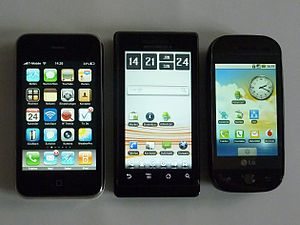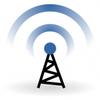
Apple iPhone 3GS, Motorola Milestone and LG GW60 (Photo credit: Wikipedia)
(ARA) – Smartphones are quickly gaining in popularity. With a virtual world in the palm of users’ hands, they can easily access email, social networking sites, news, videos, music, images, files, mapping and more. While the possibilities may seem endless, consumers should consider one limit: their budgets.
The allure of smartphones may be hard to resist, but more than one user has been hit by “bill shock.” Consumers experience bill shock when they receive a bill that is significantly higher than what they were expecting. Many monthly service plans include a maximum level of data usage. Once customers surpass that threshold, the overage charges start piling up, and the final tally can be hard to swallow. Taking a few precautions can help keep costs under control:
- Be selective with your usage. Smartphones are great tools on the go, but some activities are best left to other devices, like your tablet PC, laptop or PC. Frequently streaming music and videos will take a huge bite out of your monthly data allowance so it may be best to save these activities for devices that are not tied to your cellphone plan.
-
Be realistic about your data needs and then select a plan that best meets your data consumption. Consider whether you’ll be streaming music or videos, downloading apps or games, sending photos or documents, surfing the Web or checking email. Each of these activities requires bandwidth, some more than others. Just looking at the weather or other news doesn’t use much data – the activity that really racks up the dollars is streaming and downloading files.
-
Use Wi-Fi when you can. Data accessed with a Wi-Fi connection won’t count against your cellular service data usage. If you have a wireless router at home, simply switch over to Wi-Fi. If you don’t have Wi-Fi access at home, there are plenty of cafes, bookstores and other community gathering places that offer free (or nearly free) Wi-Fi. In fact Wi-Fi is easy to set up, for an easy how-to video visit youtu.be/Wi-9Cedw0vs?t=50s.
-
Consider no-contract cellphone plans. Major carriers typically offer the “best” prices with a two-year contract. However, you can expect a stiff penalty if you need to break the contract, as well as steep overage charges if you exceed your plan’s limits. Instead, choose a company like Consumer Cellular, www.consumercellular.com, a no-contract cellphone carrier that allows customers to change their plans as often as necessary, without penalty, enabling them to capture the best rates for their usage needs.
-
Monitor your usage levels. If you haven’t used a smartphone yet, it may be difficult to determine an accurate estimate of data requirements. Check with your carrier about enabling usage alerts to notify you when you are getting close to your plan’s limits. With some service providers, like Consumer Cellular, you’re automatically opted-in to the alerts and get notified when you’re approaching, are at and have exceeded your limits. The company sends alerts at 75 percent, 100 percent, 125 percent and 150 percent to give customers plenty of time to change or modify their plan to avoid overage fees. There are also free smartphone apps that help you monitor your usage.
Owning a smartphone doesn’t need to be a budget-buster. With just a few simple tips, users can keep their bills in check while enjoying the convenience and capabilities of their mobile devices.





